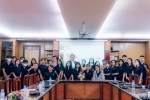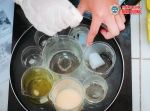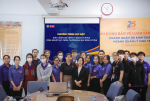Antifungal Activity of Squid Pen Chitosan Nanoparticles against Three Fungal Pathogens in Various Citrus Fruits In Vitro and In Vivo
2024-01-03T03:19:37-05:00
2024-01-03T03:19:37-05:00
https://iast.bdu.edu.vn:/index.php/nghien-cuu-khoa-hoc/antifungal-activity-of-squid-pen-chitosan-nanoparticles-against-three-fungal-pathogens-in-various-citrus-fruits-in-vitro-and-in-vivo-294.html
https://iast.bdu.edu.vn:/uploads/news/2022_03/shutterstock303651068-1280x720-1200x676-1.jpg
Viện Khoa học và Công nghệ ứng dựng IAST || Trường Đại học Bình Dương
https://iast.bdu.edu.vn:/uploads/logo-iast-140-transparent.png
Thứ ba - 11/01/2022 03:15
Hoang Ngoc Cuong, Nguyen Cong Minh, Nguyen Van Hoa, Dang Ha Giang, Nguyen Van Hieu, Pham Viet Nam
Fungal infections have been considered a primary cause of the postharvest losses of citrus fruits. Therefore, it is necessary to find low-cost and high antifungal activity materials for preventing the decay of citrus fruits after harvest. In this study, squid chitosan nanoparticles (SCNs) were prepared from squid pen chitosan and used as a biofungicide against three citrus fungal pathogens in both in vitro and in vivo evaluations. The prepared SCNs had a mean size of ca. 56 nm and a high zeta potential of +98.7 eV with a narrow size distribution. At a range of 50–250 ppm, the SCN concentration of 200 ppm exhibited the highest activity in totally inhibiting the growth of Lasiodiplodia pseudotheobromae, Alternaria alternate, and Penicillium digitatum in in vitro tests where these fungi were isolated from symptomatic fruits and identified. Furthermore, after 12 days of incubation at 30 ± 0.2 °C and high relative humidity in in vivo studies, the infection area of the sample treated at 250 ppm completely suppressed fruit disease symptoms. The results demonstrate that prepared SCNs efficiently control postharvest citrus fruit diseases. These findings recommend applying SCNs as a potential candidate for citrus fruit storage.
Coatings
 Thông tin liên hệ
Thông tin liên hệ
 CHÀO CÁC BẠN YÊU BÁNH
CHÀO CÁC BẠN YÊU BÁNH
 Các giải pháp toàn diện về chất lượng và an toàn thực phẩm
Các giải pháp toàn diện về chất lượng và an toàn thực phẩm
 THÔNG BÁO NGÀY HỌC CHÍNH THỨC
THÔNG BÁO NGÀY HỌC CHÍNH THỨC
 WORKSHOP "MÓN QUÀ TÌNH THÂN”
WORKSHOP "MÓN QUÀ TÌNH THÂN”
 "Healthy Food - Eat Clean" - Workshop về ẩm thực lành mạnh!
"Healthy Food - Eat Clean" - Workshop về ẩm thực lành mạnh!
 ỨNG DỤNG HÓA HỌC LÀM XÀ PHÒNG HANDMADE
ỨNG DỤNG HÓA HỌC LÀM XÀ PHÒNG HANDMADE
 THÔNG TIN CHUNG
THÔNG TIN CHUNG
 Họp mặt, giao lưu giữa Khoa Công nghệ thực phẩm và Công ty TNHH Jizaka
Họp mặt, giao lưu giữa Khoa Công nghệ thực phẩm và Công ty TNHH Jizaka
 NHÂN SỰ
NHÂN SỰ